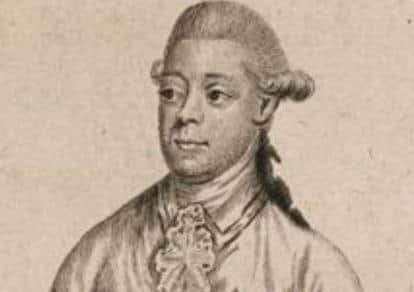Orangeman visits to Wexford to recall the Order’s almost forgotten historic links to the area


Quincey Dougan, who made the 150 mile trip to Gorey Civic Centre last Thursday to give a presentation on his historical research, said Orangeism once covered the entire county to the south of Leinster and east coast of Ireland.
Quincey, himself an Orangeman, has travelled the length and breadth of Ireland speaking on the Orange heritage and has been researching Co Wexford for some time, liaising with several well-known local historians.
Advertisement
Hide AdAdvertisement
Hide AdHe said: “Whilst Wexford Orangeism once covered almost the entirety of the county, it was always particularly contentious because of the legacy of the 1798 Rebellion.


“Wexford Orangemen played a significant role in engaging the United Irishmen in Wexford, and because of that several figures have passed into local folklore, some becoming infamous.
“The most notorious is undoubtedly Hunter Gowan of Mount Nebo near Gorey, who – even though a man of over 70 years of age – has, as leader of a Yeomanry troop, been attributed as responsible for a long litany of outrages.”
Quincey added: “The first County Grand Master was Wexford MP George Ogle, who by virtue of his opposition to the Act of Union, was elected on the Twelfth of July 1801 to the supreme position in Orangeism, the Grand Master of Ireland.
Advertisement
Hide AdAdvertisement
Hide Ad“At its peak in the 1830s a County Grand Lodge of Wexford consisted of three districts in Enniscorthy, Gorey and Wexford, overseeing 20 private lodges and over 2,000 Orangemen. Before the end of the 19th century the most well-known Orange centres were Gorey in the north of the county, and Wexford town in the south. Both had their own dedicated Orange halls.
“The Gorey premises is now a private dwelling, while the Wexford Hall in the town’s Abbey Street has long since been demolished. Wexford Orangeism survived well into the 20th century as part of a combined Wicklow and Wexford County Grand Orange Lodge.”
A fascinating discovery made by Quincey is a long forgotten Orange ritual not practised outside the county: “The local Orange affinity with the defeat of the 1798 Rebellion was manifest for almost 40 years by an Orange parade in Enniscorthy. Each year on June 21 Wexford Orangemen gathered in the town to celebrate the victory over rebels at Vinegar Hill by burning a symbolic ‘Tree of Liberty’.”
Quincey welcomed contact from anyone with any anecdotes, information or artefacts related to the forgotten Orange heritage of Wexford, or indeed across Ireland. His contact is Quincey at [email protected]